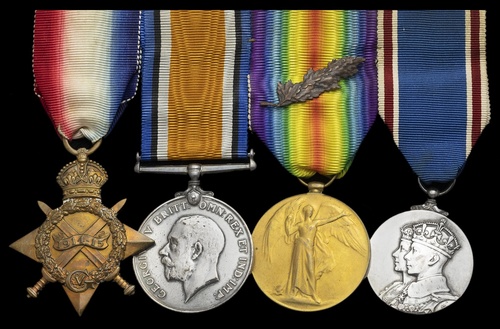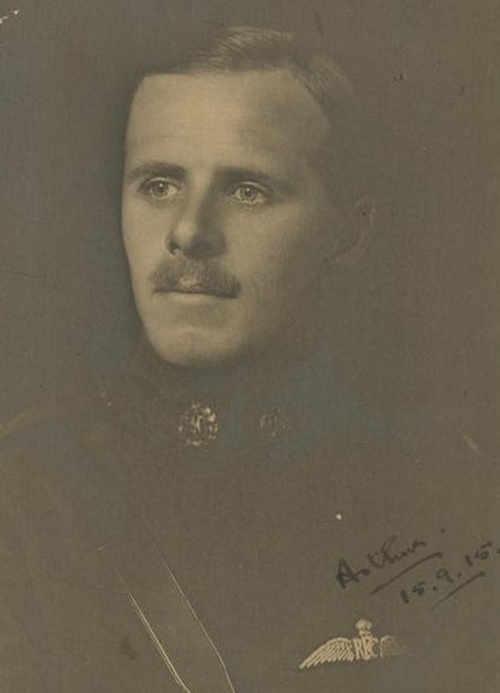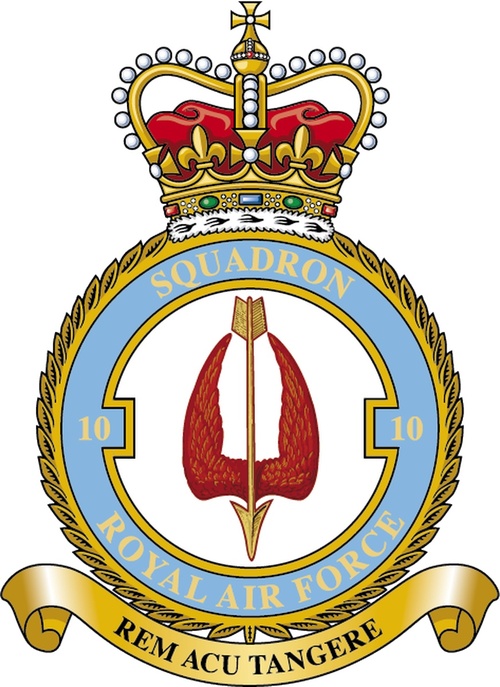Auction: 25001 - Orders, Decorations and Medals
Lot: 74
Four: Wing Commander A. T. Whitelock, Royal Air Force, late Royal Flying Corps, who was 'mentioned' in 1917
1914-15 Star (2. Lieut. A. T. Whitelock. R.F.C.); British War and Victory Medals, with M.I.D. oak leaves (Major A. T. Whitelock. R.F.C.); Coronation 1937, mounted as worn, very fine (4)
Arthur Thomas Whitelock was born on 25 March 1888, was educated at Archbishop Holgate's School and Jesus College, Oxford. He was a Classical Master living at Oakdene, Mount Vernon Road, Barnsley at the outbreak of the Great War. He took Aero Certificate No. 1263 on a Farman biplane at Brooklands on 22 May 1915, being made 2nd Lieutenant in the Royal Flying Corps that same day. Whitelock served in France with No. 5 Squadron from 4 July 1915. On 23 September 1915, having joined No. 4 Squadron, he was pilot of Be2c 2035. That day formed part of the preparations for the Battle of Loos, Whitelock shot down a 'Fokker 2 seater' south-east of Douai and south of Arras, the enemy aircraft '...shot through prop'.
Whitelock and Balmain had a lucky escape on 25 November 1915. While engaged on an artillery co-operation sortie between Bray and Albert in Be2c 2001, they were attacked by an enemy aircraft, of a type unknown to them. No sooner had they driven it off than they were attacked from above by an Albatros, which they also drove off. A third aircraft attacked from behind and Whitelock managed to disengage, having expended all their ammunition. Considering discretion to be the better part of valour, the mission was abandoned. On 14 December, his aircraft was damaged after being chased by Fokker on a special mission to Hervilly.
Returned home, he returned to France in September 1916 to assume Command of No. 7 Squadron and was 'mentioned' (London Gazette 15 May 1917 refers).
Made Wing Commander in January 1922, he went to RAF Halton on Staff Duties in April 1924 and was in command of No. 10 Squadron in 1929. Whilst with that unit he designed their Squadron Badge & motto - rem acu tangere ('to hit the mark!'), which was apparently conceived whilst watching archery practice in Oxford. He took over No. 2 Bomber Group at Andover in May 1935 and was District Commandant Rochester by 1939. He was retired in March 1943 and is buried in Bibury, with a new headstone being unveiled by the 10 Squadron Association in recent years.
Subject to 20% VAT on Buyer’s Premium. For more information please view Terms and Conditions for Buyers.
Estimate
£400 to £600
Starting price
£300









